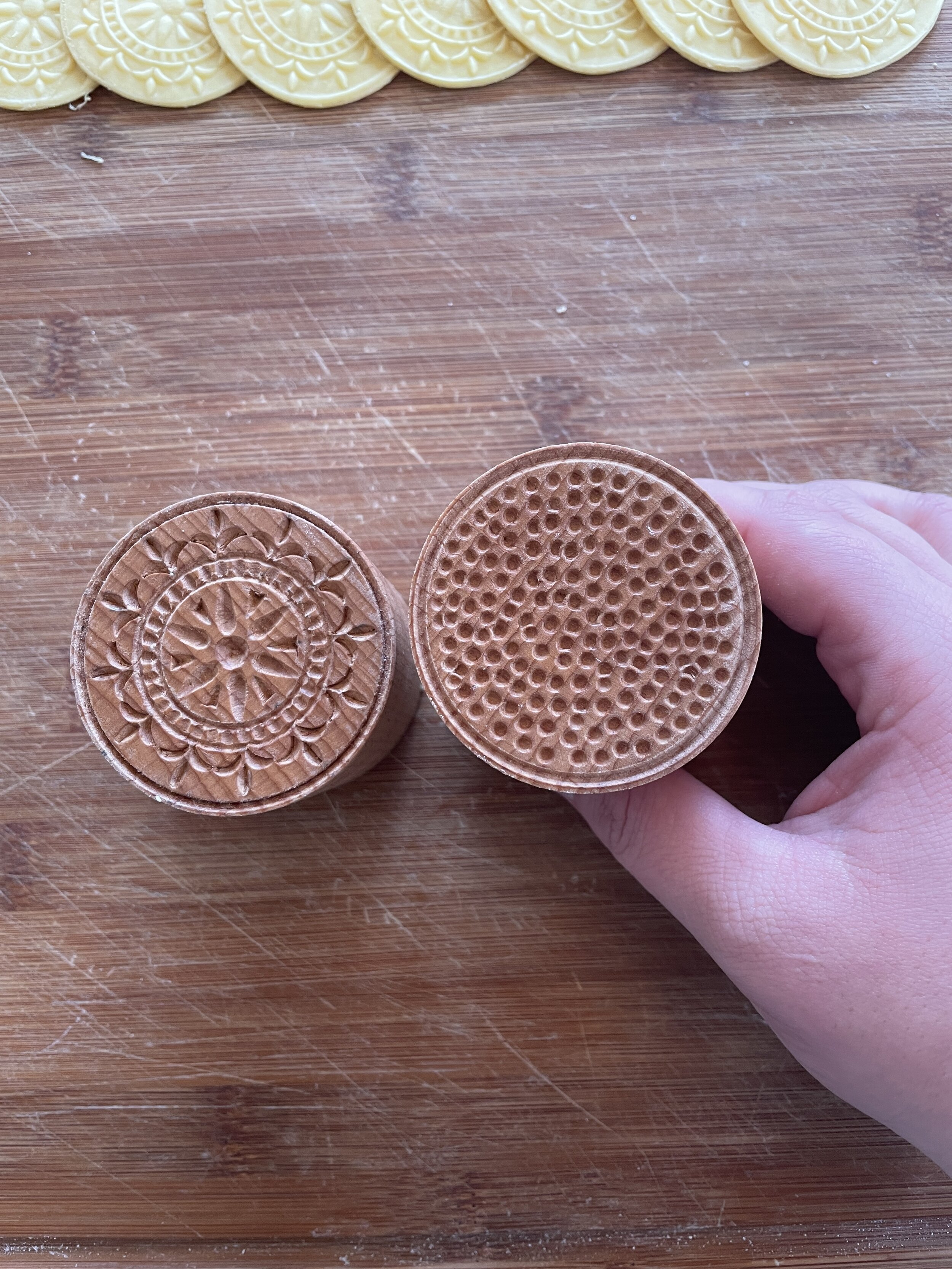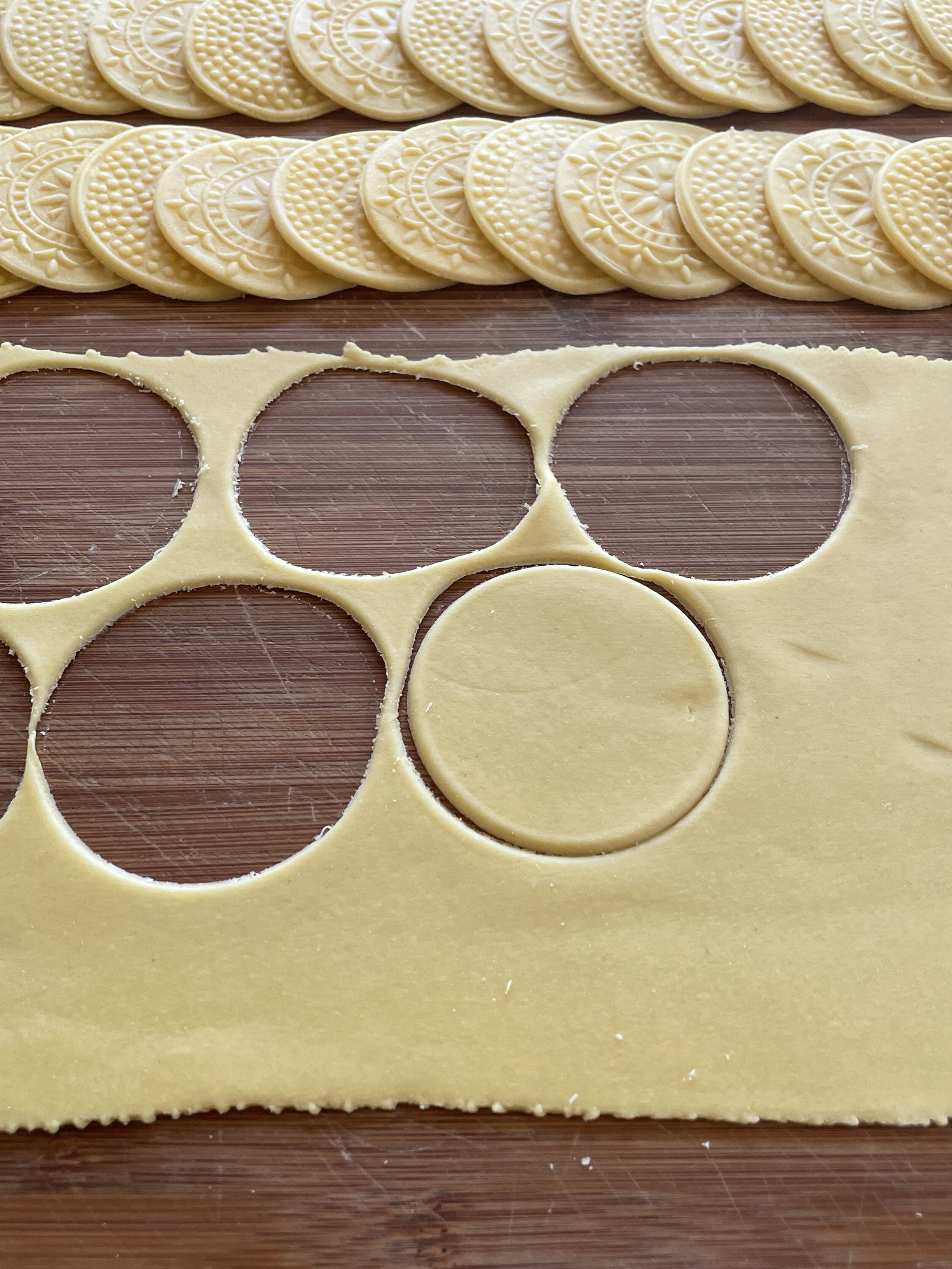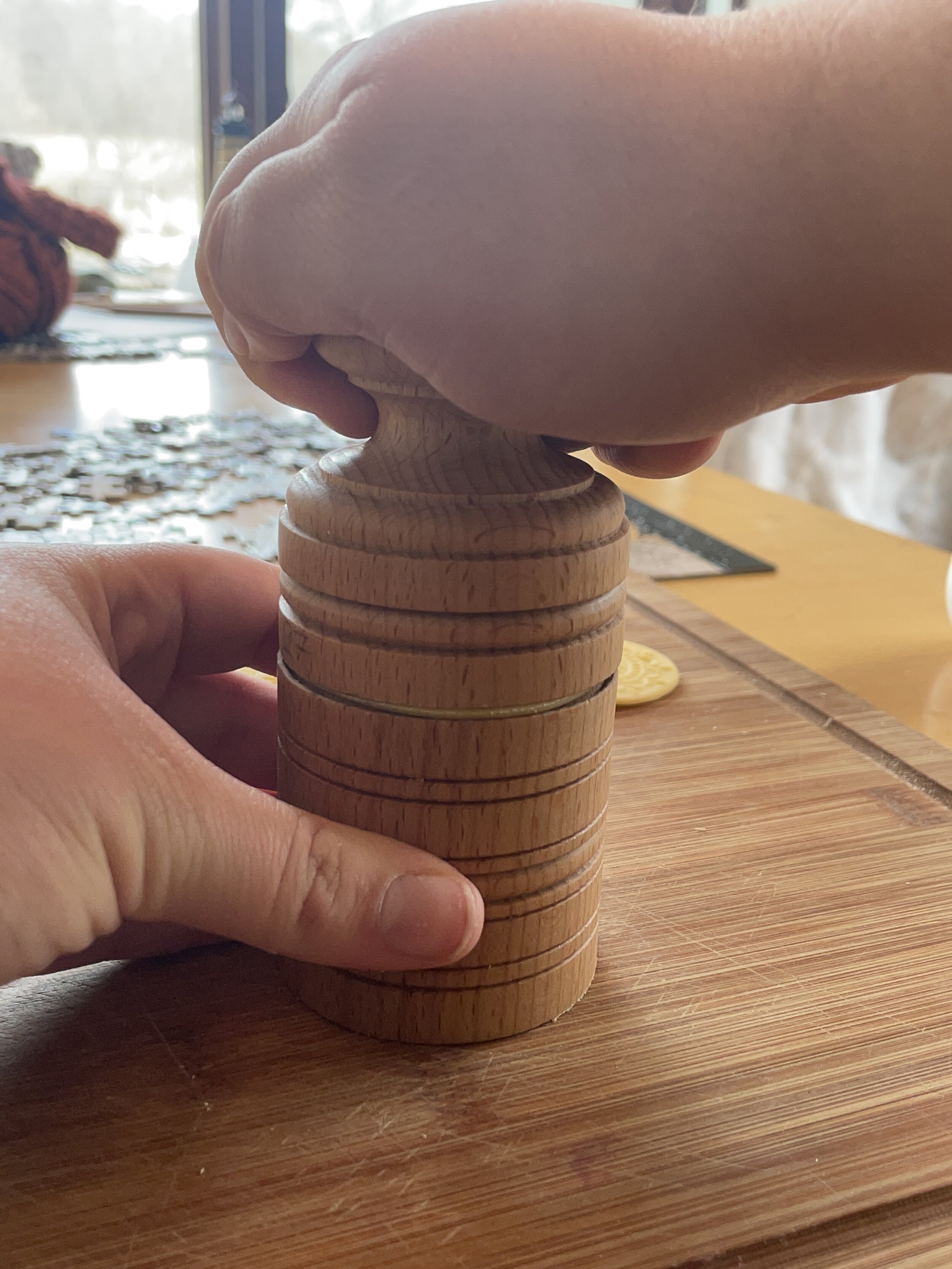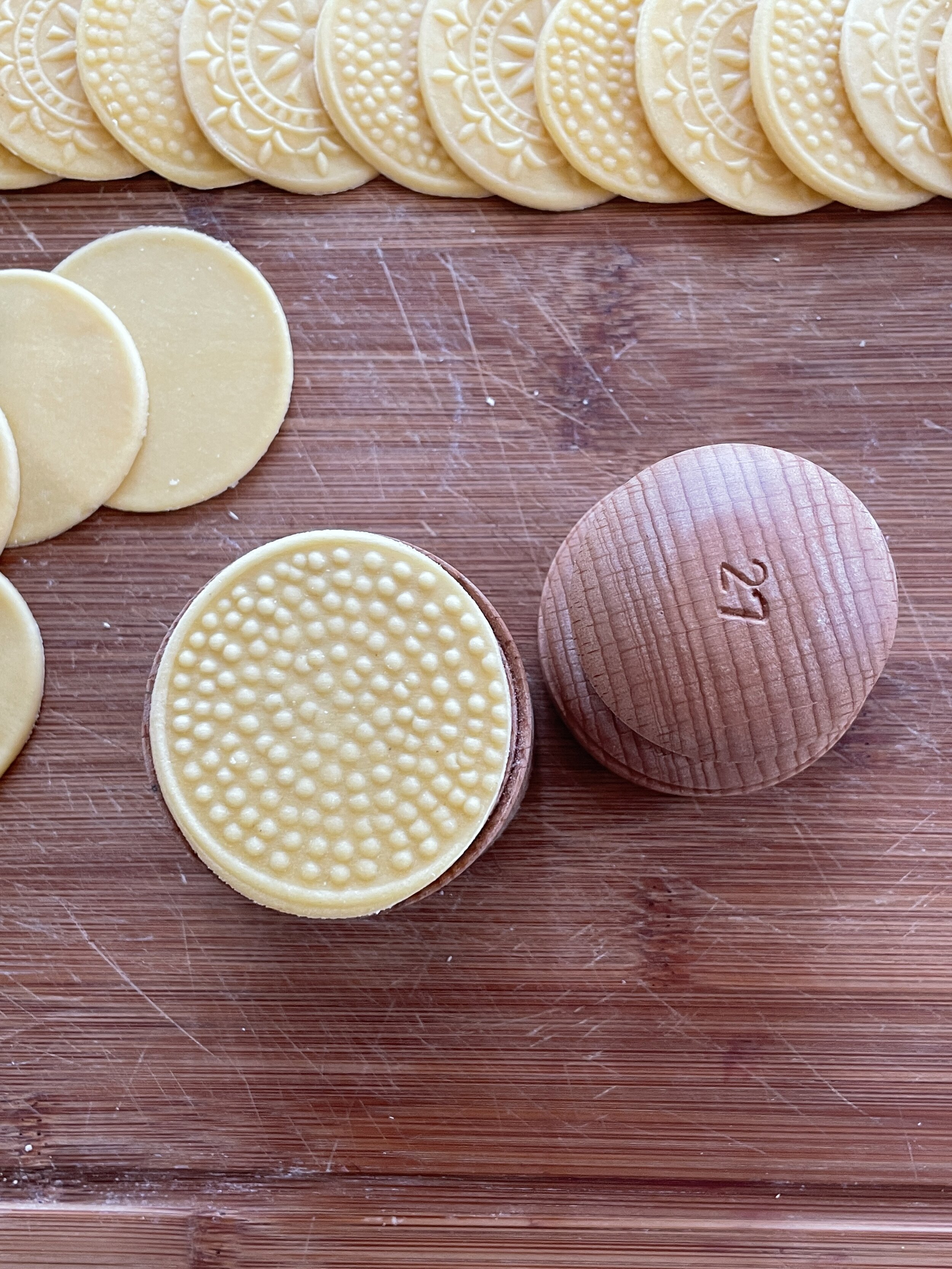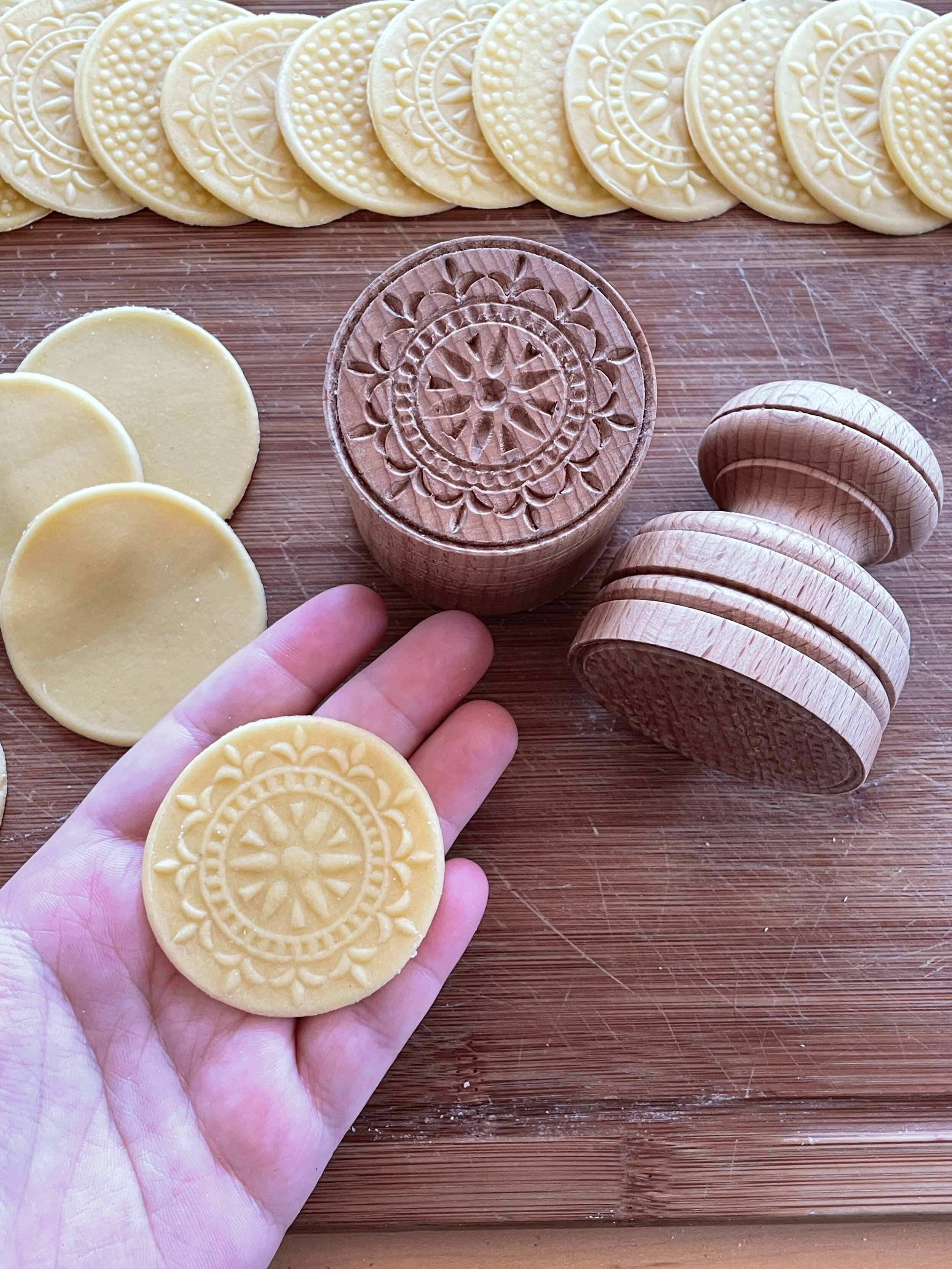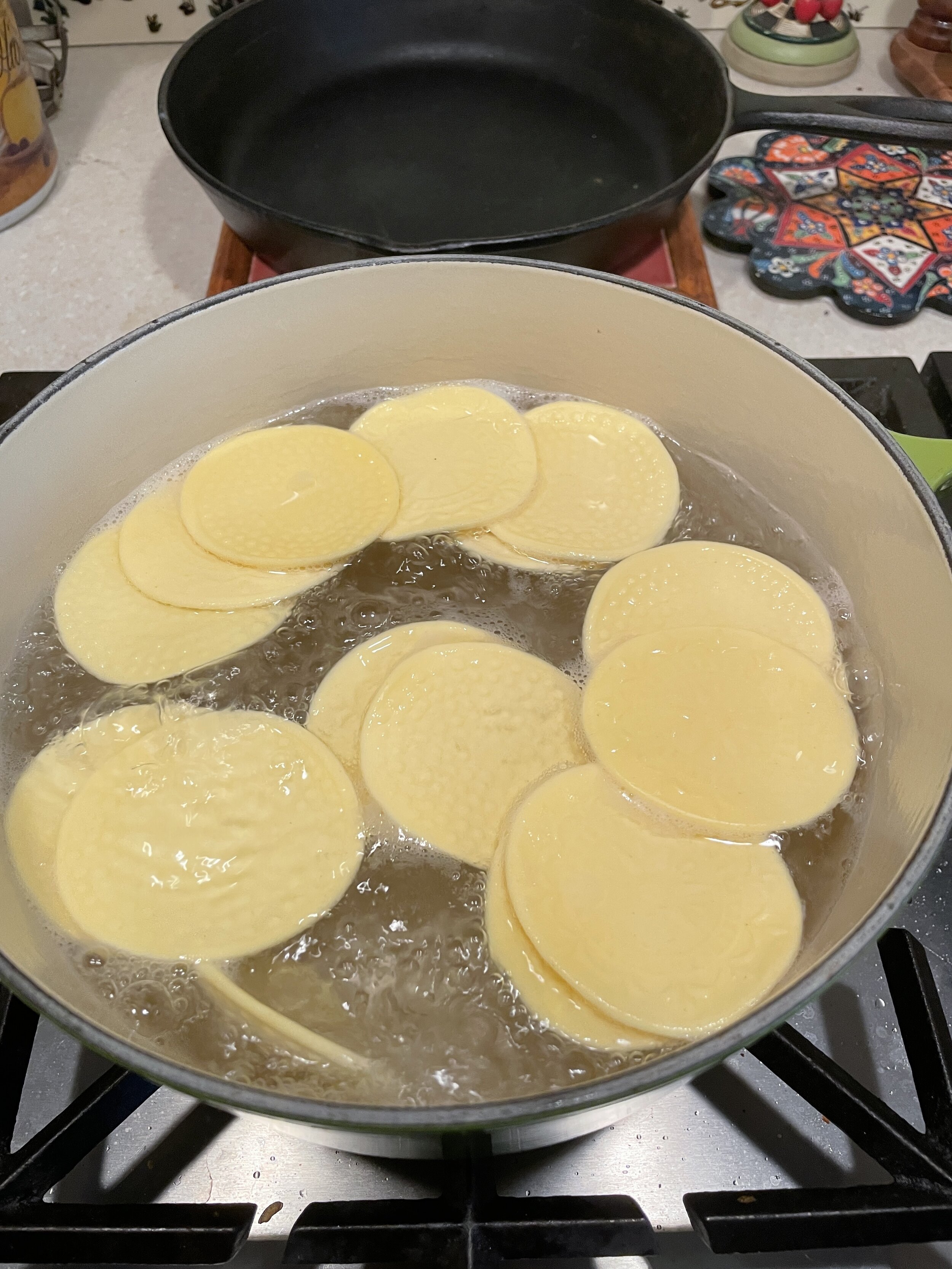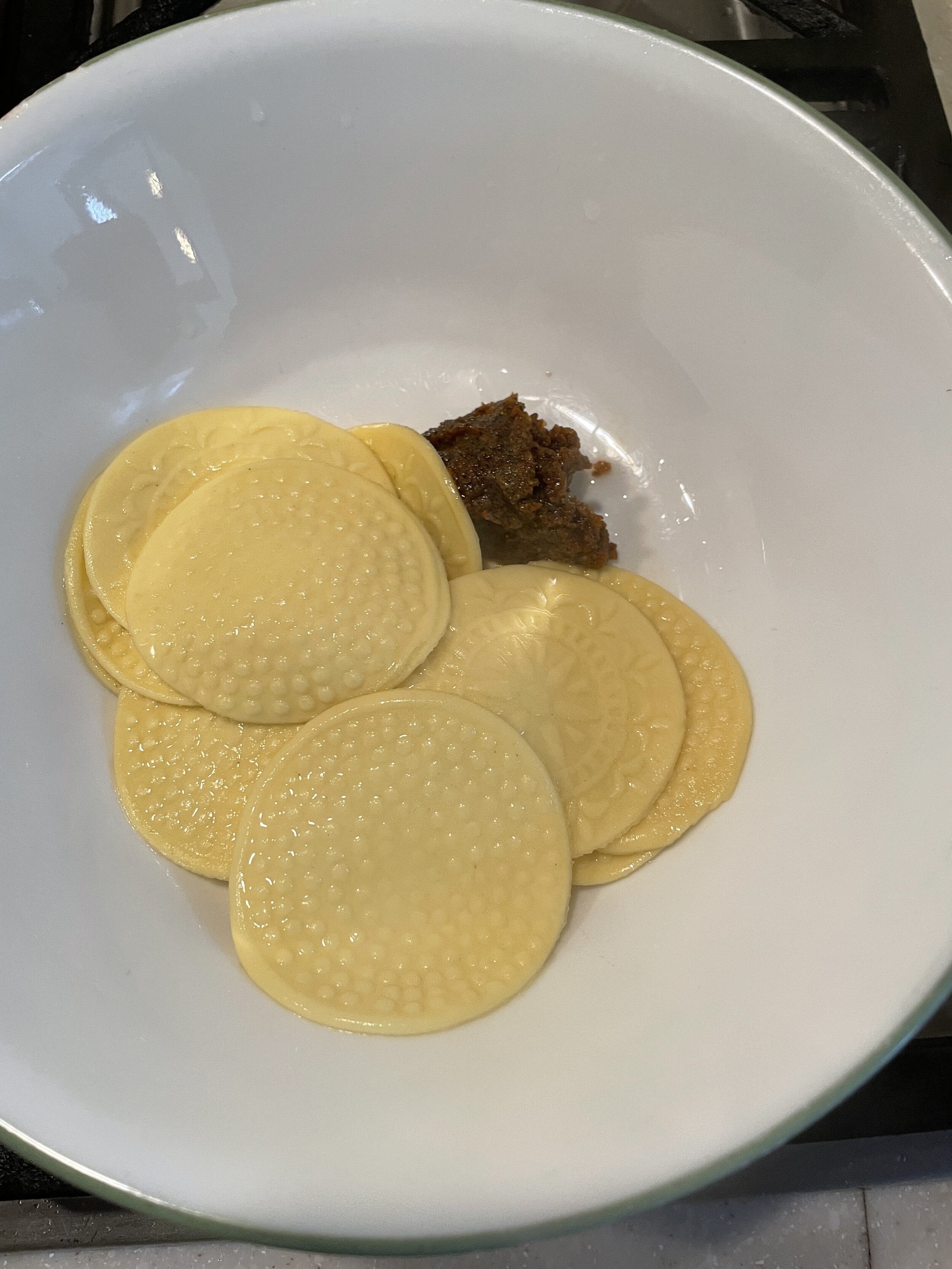Corzetti
Corzetti. Probably the most beautiful shape you can make with the least amount of effort.
Typical of Liguria (although also found in other regions), corzetti get their name from a 14th century Genoan coin. They are also called croxetti, curzetti, or crosetti, depending on location and dialect. Today, they still mimic the original shape, as they are embossed with various patterns using a special wooden stamping tool. In the Renaissance, corzetti would bear the coat of arms of the noble family serving them. Modern designs can still bear ancient designs or regional symbols, but it's also common to feature abstract patterns, or images of fruits or other elements of nature.
I first saw corzetti in their dried form when I was visiting La Spezia in Liguria. They were small disks, maybe the size of a half-dollar. Most of the fresh corzetti, however, have a larger diameter. There is also another variety from the Val Polcevera, which resembles a twisted 8 shape.
I got my stamp from the lovely folks at Romagnoli Pasta Tools, who have been in the business of woodcarving since 1918. They sell their stamps and other products through their Etsy shop.
Each is hand carved, and consists of two pieces. The bottom half holds one part of the double-sided stamp, and also a cutter to create perfectly sized disks of dough. The top piece holds the other half of the design, and the stamp’s handle.
Corzetti dough varies slightly from the usual egg dough of Emilia-Romagna. Some recipes contain more wine than others, but this one only includes a splash to help bring everything together.
To make the dough you will need:
200g 00 flour
200g semola rimacinata
4 eggs
1t extra-virgin olive oil
pinch of salt
water or dry white wine (as needed)
Make your dough, following the standard process for fresh egg pasta (outlined here if needed).
Depending on the size of your eggs, you will probably need a bit more moisture. If the dough is too dry, you can add white wine (or water), a teaspoon or so at a time, until it is hydrated enough to come together. Knead until smooth and then let rest, covered and at room temperature, for at least 30 minutes.
Once the dough is rested, roll it out, either by hand or using a machine. I like to roll out my dough here slightly on the thicker side, since the stamping process will thin it out a bit more.
Using the cutter on your stamp, press and twist to make your discs of pasta.
Then, set the bottom half of the stamp down on your board, with the print facing up. Lay a disc down, and use the top handle of your stamp to press firmly down. I slightly twist my hands as well, which helps the design to properly emboss itself on the disk of pasta.
Finally, carefully remove your finished corzetti from the stamp, and set aside until you are finished cutting and stamping.
You can dry the corzetti if you wish, or cook them straight away.
I chose to cook mine, and serve them with some leftover sundried-tomato pesto I had in my fridge.
You can find the pesto recipe in a previous blog post here.
Other more traditional pairings include pesto alla genovese, or a simple marjoram butter sauce with pine nuts.




